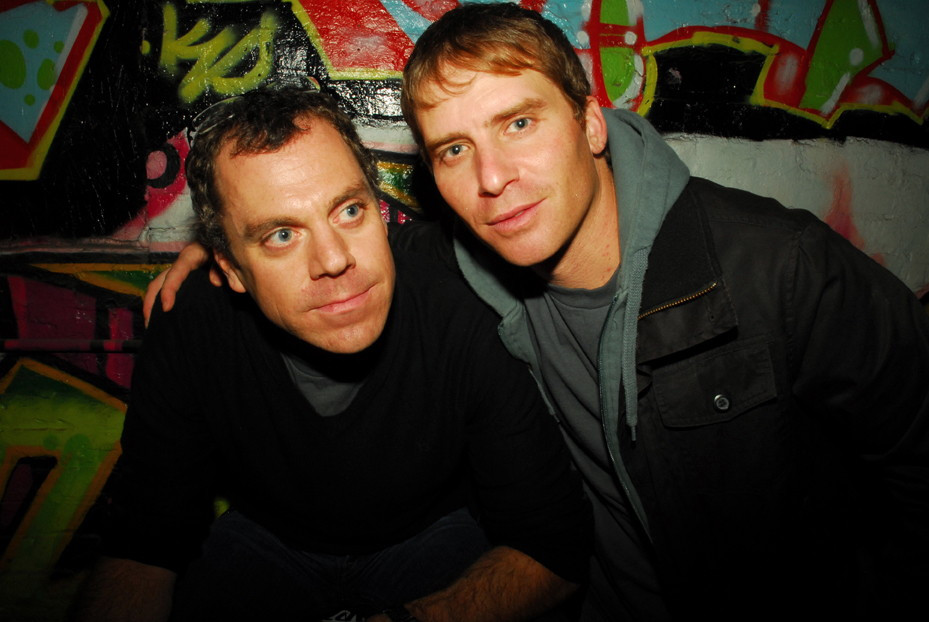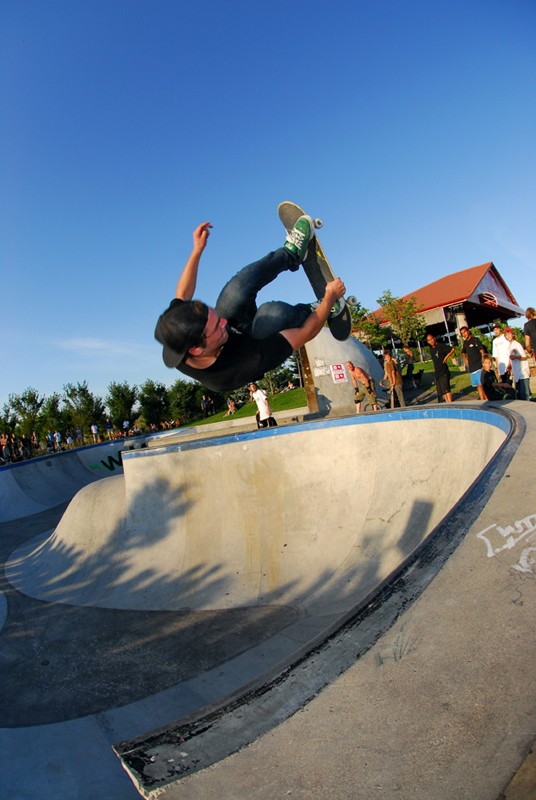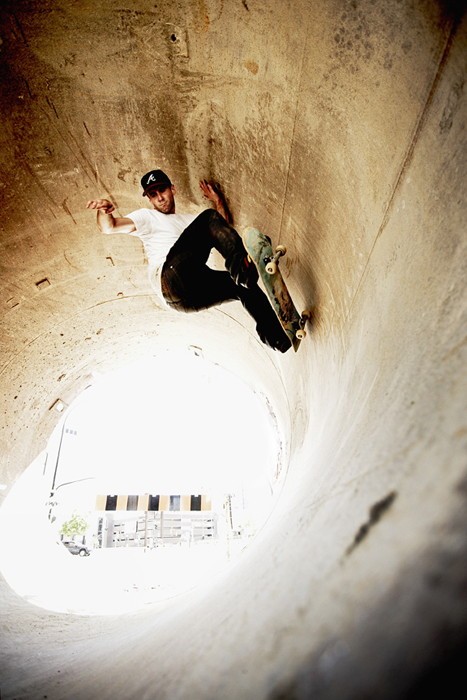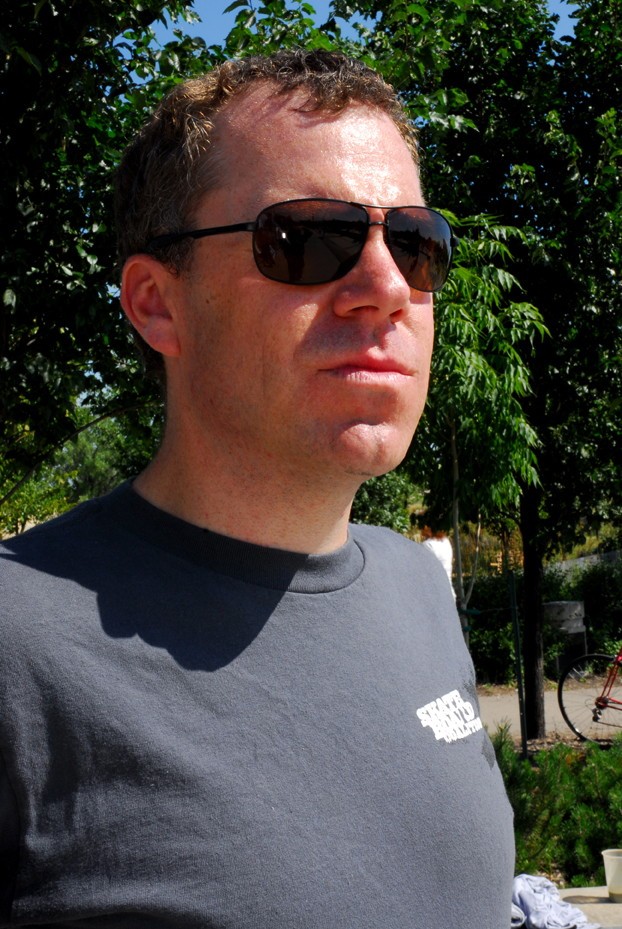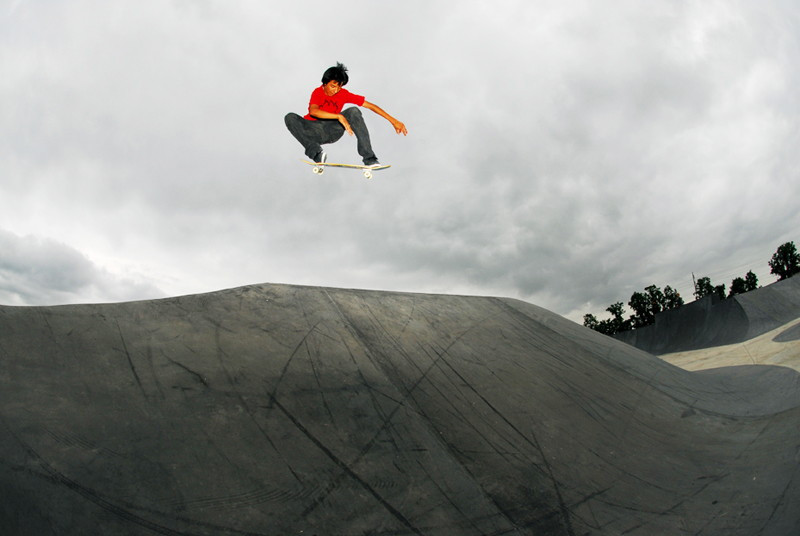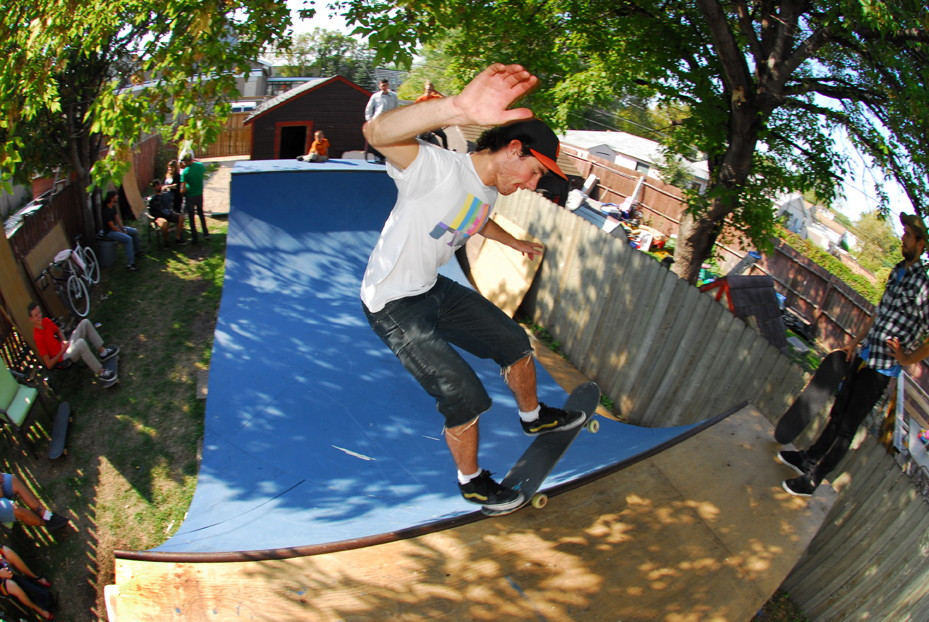Skateboarding is not a crime
Skateboarding has come a long way in this province – but there’s still work to be done
Hundreds of people flooded the Forks in plus-30 degree weather late last month to participate in Skate 4 Cancer, an all-day skateboarding event aimed at raising awareness about the disease.
The scene will most likely be similar this Saturday, Oct. 10 when The Plaza, the skatepark at the Forks, hosts a skating competition called Sk8204.
With many people skateboarding throughout Winnipeg, the skateboarding community has changed dramatically over the past 40 years. It’s grown in popularity to such a degree that there’s even a coalition in place to give skateboarders a voice.
Formed in 2006, around the same time The Plaza was being constructed, the mandate of the Skateboard Coalition of Manitoba is to speak on behalf of skaters in the city.
“[Politicians] pretty much forced us to do this,” says Cliff Heide. “Some skateparks were made poorly and skateboarders were sad to see that money wasted.”
In addition to being the director at The Edge, an indoor skatepark in the Exchange District, Heide is one of three founding coalition members.
Today, the coalition is made up of 10 members and five standing committees aimed at improving conditions for skateboarders in the city.
“[Winnipeg was] 15 years behind places like Vancouver and people began to notice and wanted something done,” Heide says of the coalition’s formation.
In the three years since it was constructed, The Plaza has become a world-renowned skatepark where the likes of champion skater Tony Hawk have tested themselves.
“Six years ago skateparks like [those in] East St. Paul and St. Vital were made on a modular style and stuff was built that couldn’t be used,” Heide explains.
Modular-style skateparks are built like a puzzle – the various components are poured and made elsewhere, then brought to the site and put into place. Skateparks built in this manner are less than ideal.
“The design of a lot of skateparks, like how St. Vital uses asphalt, that’s terrible for skateboarding,” says 18-year-old skateboarder Wayne Truong.
Harsh Winnipeg winters cause the skateparks to shift and crack, making them look something like city roads in the springtime.
The Plaza, on the other hand, was poured on site and built with granite – something that will make it more durable and longer lasting.
“It was a big step forward and a huge turning point when [The Plaza] was built,” Heide says. “[Skateboarding] was accepted – people saw that the money was donated and [it] became an acceptable activity for kids to do.”
The city’s changed a lot when it comes to skateboarding.
“A few years ago there were more lawn bowling sites than skateparks,” Heide recalls.
It’s a positive change because the demand is out there.
“Skateparks are always being used, unlike baseball and football fields that are often empty.”
Back in the day
Skateboarding in Winnipeg has its roots in the same decade as the first moon landing and Woodstock.
“In the ‘60s, skateboarding was more like a fad – something like a yo-yo or hula hoop,” says 31-year-old Darren Haugen, a coalition member and creator of WinnipegSkateparks.com, a site dedicated in part to documenting the history of skateboarding in Manitoba.
“It came from kids cutting up roller skates and putting them together. They were archaic and not user-friendly at all, with metal or clay wheels.”
By Christmas 1965, skateboarding had all but died off.
“It died out mainly because of by-laws and injuries. City council put bans on them so overnight it basically died out,” Haugen says.
It wasn’t until the invention of the polyurethane wheel by Frank Nasworthy in the early ‘70s that skateboarding made its comeback.
“It didn’t come back to Winnipeg until around 1976-77 and got really big around 1978,” Haugen says.
There were two private indoor skateparks at the time, Skywave and Paradise, both with teams.
“Those teams would come out and do demonstrations and were even sponsored by companies like Pepsi and Coke.”
Some of those demonstrations would include slalom, ramps, 360s and high jumping.
With skateboarding an accepted activity in the ‘70s, skateboarders would go out to national contests to compete, with Winnipeg sending their own representatives.
Around 1980, “skateboarding fell off the face of the earth again” in Winnipeg, says Haugen – but five years later, it was back.
“Parents and teachers didn’t want you to skateboard. It had this rebellious, fuck-you attitude,” Haugen says of that period.
It wasn’t just parents and teachers who didn’t understand, though. Even skateboarders’ peers were at times against them.
“Jocks used to come down and beat up skateboarders,” says 34-year-old Johnny Erhart. “Now you see the jocks wearing the skate clothes.”
Better known in Winnipeg’s skateboarding community as Johnny Skater, Erhart first stepped on a board in 1987 at the age of 12. He skated both street-style as well as on ramps, though the former soon became more popular than the latter.
“The big names in vert and ramp of the ‘80s couldn’t sell boards come the early ‘90s,” Haugen says of the increase in popularity at that time of riding the streets instead of big ramps.
In the early ‘90s skateboarding still hadn’t reached the level of popularity it’s at in Winnipeg today.
“When I started skateboarding [in 1994], it wasn’t big,” says Bill Acheson, the 29-year-old spokesperson for the skateboarding coalition.
“Growing up, you would hear about Johnny Skater and the spots he skated, and it would be almost mysterious. Back then everything was a little more legendary – a big difference from now, where everything is in the spotlight,” Acheson says.
Haugen agrees that there’s been a change in attitude in recent years.
“Now that [The Plaza] is built, people who hadn’t skated since the ‘70s or ‘80s are coming out and skating the bowls and transitions they used to see in the magazines [when] they used to skate,” he says.
Erhart thinks skateboarders should realize how lucky they are to have so many options in the city when it comes to skateparks.
“It’s funny to see the kids complain about what they’ve got. If only they knew,” Erhart says.
He also marvels at how far technique has come in terms of the tricks people are doing today.
“That would have been mind-blowing back in the day.”
“ Jocks used to come down and beat up skateboarders. Now you see the jocks wearing the skate clothes.
Johnny Skater, Winnipeg skateboarder
A community and a culture
Bob Somers, acting chair of the Skateboarding Coalition of Manitoba, started skateboarding at the age of 10 in 1984.
“There were a couple of older guys down the street [who were skateboarders] and we looked up to them,” he says.
In 2006, Somers was invited along with Cliff Heide and Sk8 Skates owner Genico Aiello to sit down with Roller Sports Manitoba, an organization associated with Sport Manitoba, a not-for-profit entity dedicated to the development of amateur sport in the province.
Skateboarding in Manitoba falls under RSM’s umbrella and they were hoping one of the three men would become its spokesperson for skateboarding.
“We realized there was a lot of media going on around skateboarding and we were concerned about not having a voice,” says Somers, a landscape architect who helped design The Plaza. Ultimately, however, Somers and his colleagues felt it wasn’t a good fit.
They didn’t want skateboarding to become something monopolized by tracking records and statistics, setting up coaches and practices and holding events where the emphasis was on one person being the best.
“Skateboarding is more of a culture than a sport,” Somers says. “I think competition in skateboarding is more about independent growth than it is about becoming the best at it.
“I say that knowing full well that there’s competitions in the world that are very different from that and are very much about being the number one skateboarder in the world. But, that is a whole other level than what we envisioned for skateboarding in Manitoba.”
That’s not to say skateboarding in the province couldn’t go in that direction, but for now, skateboarding competitions are more about bonding.
“It really is about a lot of people hanging out and having a good time. There happens to be money and prizes, but it’s [mainly] something that brings the community together,” Somers says.
He and his colleagues eventually decided to form the coalition instead of affiliating with RSM. Even still, Sport Manitoba has been very gracious.
“Sport Manitoba was really supportive of us – and still is to this day – and gave us a lot of information to start,” Somers says.
In addition to speaking on behalf of skateboards, the coalition puts on a variety of skate contests and tries to get more kids involved in the culture.
Somers hopes that skateboarders can even develop skills in the scene that they can take with them as they move on in life.
“[We want to] make it so that skaters in Winnipeg can feel that there is some sort of future for them here, whether it be [learning skills] as a photographer or videographer,” Somers says.
“There is a ton of potential for what skateboarding can be in Winnipeg.”
The future
The coalition’s next big project is changing the bylaw in Winnipeg that prohibits skateboarding on the street.
“Right now, it’s technically illegal to skateboard to the Forks. I think that’s a problem. It doesn’t make sense,” Somers says. “I would really like Manitoba to become a real skateboard-friendly province.”
The challenge isn’t only in getting non-skateboarders to side with the coalition, but even some skateboarders.
“It’s been the hardest thing as a coalition to ride that crest between being organized and being legitimate to the skaters,” Somers says.
“Skateboarders over time have always stayed the same. It’s just the community around them that changes.”
In the print version of this article, Richard Bolton was incorrectly identified in his photograph. The caption has been corrected.
Published in Volume 64, Number 6 of The Uniter (October 8, 2009)

